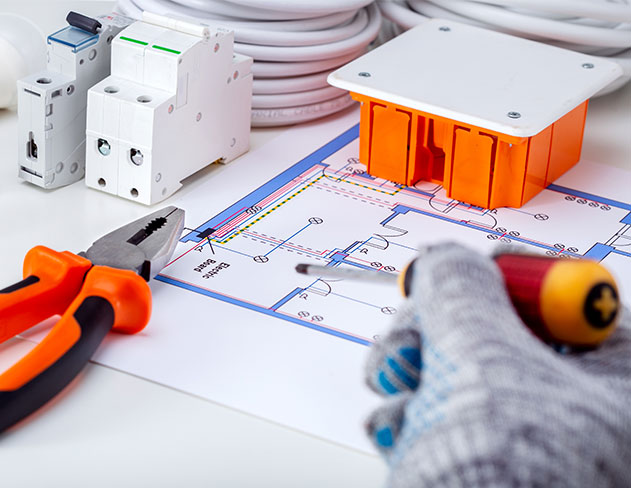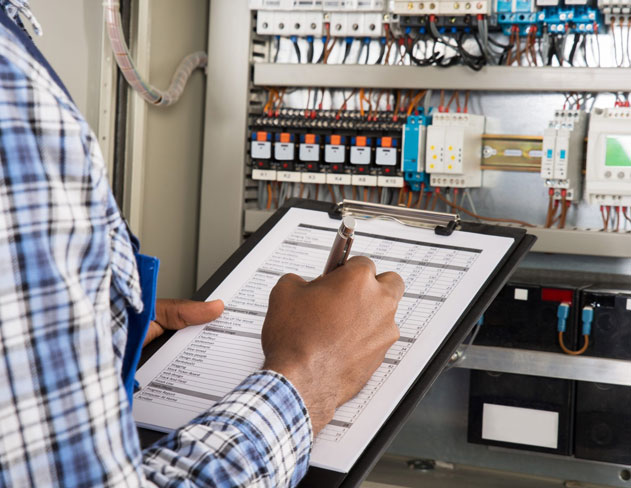At Hexo Electrical Testing, we enable innovations in high-voltage equipment verification and monitoring for safety-critical applications. As advanced functionality increases internationally across sectors, rigorous testing practices grow increasingly vital for managing escalating complex systems reliably.
The research interests of Robert Fox and Anna Guagnini have emphasised the role of individual inventors, managers, and engineers in British technological achievements, as well as the impact of technological change on UK industrial and economic development. As we will explore, innovations in electrical systems testing technology have been critical for ensuring the safety and performance of components across UK industries, such as the automotive industry, especially as systems grow more complex.
Definition of Electrical Testing Technology
Electrical testing technology encompasses the methods, equipment, and capabilities necessary to evaluate and confirm the functionality, safety, reliability, and regulatory compliance of electrical systems and components.
For electric vehicles, rigorous high-voltage testing across lengthy development cycles is imperative before market release. Evaluating battery packs, power electronics, electric motors and drives, charging systems, and vehicle connectivity infrastructure involves extensive validation to simulation models. Energy efficiency is a big reason for testing, as everyone looks to get more value for their investments.
By pushing systems to their limits through overload scenarios, climate and vibration exposure, galvanic isolation, electromagnetic compatibility assessments and more according to standards like ISO 6469-1, manufacturers can fulfil safety expectations.
Importance of Electrical Testing in Various Industries
Electrical testing innovation spans sectors from automotive to utilities to aerospace within the UK. As cutting-edge British systems advance, so too must test capabilities keep pace. The automotive industry, for example, is key for this. We will explore the evolution of testing technology and its vital role across UK industries.
Evolution of Electrical Testing Technology
Global agreements like the 2021 United Nations Climate Change Conference (COP26) held in Glasgow have accelerated automotive electrification in the UK. With the UK targeting net-zero emissions by 2050, demand for electric vehicles has grown exponentially domestically. This reliance on high-voltage components necessitates advanced testing capabilities to ensure safety and performance locally.
As the UK moves to meet sustainability targets, electric vehicle adoption creates infrastructural testing needs. Supporting a national fleet powered by high-wattage battery packs will stretch grid capacity limits. However smart charging capabilities allowing coordination of charging times with supply availability can mitigate grid upgrades. Effective integration hinges on telecommunication testing for vehicle-to-grid connectivity.
Early Methods and Equipment Used for Electrical Testing
Historically, electrical systems testing utilised carbon-powered generators before transitioning to electric alternatives across the UK. Early testing methods relied extensively on manual apparatuses like galvanometers and Wheatstone bridges.
The advent of far more sensitive analogue amplifiers, oscilloscopes and signal generators enabled nuanced electrical signature analysis for troubleshooting and failure prediction. Digital data acquisition brought further speed, accuracy and productivity.
As construction vehicles like cranes and excavators electrify, reduced environmental impacts and noise bring industry-wide benefits domestically. The shift towards electric drives and alternate fuels in the UK promises more sustainable British worksites over time.
Advancements in Technology Over the Years
Testing complexity increases in tandem with advanced functionality in the UK. As we will see, evolving British safety standards and automation present new competencies to master locally.
Testing Requirements and Challenges
Testing high-voltage (HV) components involves extensive technical complexity, rigorous project management, and expertise in advanced systems. Effectively evaluating electric vehicle parts necessitates constructing complex test configurations, implementing thorough oversight, and possessing in-depth knowledge.
Digitally prototyping builds intuition before manufacturing. Validating millions of cycles virtually shrinks real-world validation timelines while uncovering problems earlier. Simulation-based assessments inject faults or failure modes intentionally to determine resilience. Building automated testing frameworks where scripts exercise equipment at production scale under varying conditions guarantees stable functionality.
Increasing Complexity of Electrical Systems
The electrical systems powering modern automotives have escalated in sophistication, demanding cutting-edge research and continual advancement. Critical areas steering industry progress encompass improving efficiency, safety, and environmental sustainability through technological innovation.
Meeting Safety Standards and Regulations
With the UK banning new internal combustion engine cars by 2035, manufacturers must validate electric vehicle compliance with safety guidelines like ISO 6469. Pioneering testing methods can enable products to satisfy various high-voltage protections reliably.
Demands for Higher Accuracy and Efficiency in Testing
Achieving precision and speed simultaneously represents an enduring test challenge. We will discover how progress cultivates potential.
Role of Artificial Intelligence (AI) and Neural Networks in Electrical Testing
Artificial intelligence (AI) and neural networks are transforming electrical testing, monitoring, and safety through advanced data processing capabilities. By constructing intricate algorithms and analysing images quickly, AI systems can identify equipment faults, structural defects, and potential hazards ahead of failures.
Within power plants, AI-enabled sensors can continuously screen infrastructure without shutdowns required for manual inspections. Machine vision techniques leveraging neural networks allow images captured by drones and cameras to detect corrosion, cracks, rust, and other signs of deterioration rapidly. Combining computer vision and deep learning enables predictive maintenance so issues can be addressed proactively before causing significant damage.
As the world transitions towards e-mobility, AI will become integral for testing complex vehicle electronics responsibly. Self-driving functionality demands advanced sensing and validation not achievable through conventional means. By processing extensive test data, neural networks can model system performance, identify anomalies, and evaluate risks as automated technology progresses.
Application of AI Algorithms for Data Analysis and Interpretation
Applying AI for data analysis and interpretation shows promise in fault detection techniques critical for predictive maintenance. Compared to techniques relying on manual parameter-tuning, machine learning algorithms can uncover hidden insights. By autonomously selecting optimal features and mathematical models, AI fault detection can achieve high accuracy without extensive human oversight.
Statistical AI models for forecasting time-to-failure metrics provide valuable maintenance decision-making guidance. Combining continuous monitoring capabilities with AI-based failure prediction enables precise targeting of at-risk equipment. Instead of standardised upkeep intervals, neural network-driven predictive maintenance allows cost optimisation via precise understanding of asset health trajectories.
Utilising Neural Networks to Identify Patterns and Anomalies in Test Results
Human-like pattern recognition within extensive data is an area where neural networks excel. By pinpointing anomalies from historical test results, neural networks help acknowledges failures before they occur. This reduces both safety risks and costs substantially compared to reactive approaches. We will continue exploring automation and AI capabilities advancing electrical testing.
Integration of robotics for automated testing procedures
Automated testing harnessing robotic precision and control boosts defect discovery rates and performance assessment accuracy.
Within medical equipment verification, robots enable simulation of human actions during examinations without fatigue while calibrating applied forces precisely across trials.
By capturing extensive sensor data unachievable manually, robotic test systems surpass human limitations in reliability, objectivity, and consistency.
What Hexo Electrical Can Do To Help You
At Hexo Electrical Testing, we’re committed to delivering top-notch electrical testing and compliance services across London, Greater London, and the South East of England. Whether you’re a homeowner, a landlord, or running a business, our comprehensive range of services is designed to meet all your electrical safety needs.
Our expertise encompasses a broad spectrum of services, including:
- EICR Certificates: Essential for ensuring your property’s electrical systems are safe and up to standard.
- Emergency Lighting Testing: Guaranteeing that your emergency lighting works correctly in times of need.
- PAT Testing: Vital for ensuring the safety of portable electrical appliances in your home or business.
- Homebuyers Electrical Reports: A crucial check for potential property buyers.
- Thermographic Surveys: An advanced method to detect hidden electrical faults.
- Electrical Remedial Work: From minor fixes to major repairs, we’ve got you covered.
FAQ
What is one recent innovation in electrical testing?
The AVT is a permanently mounted tester that automates absence of voltage testing to make the hazardous verification process quicker and simpler for technicians. By pushing a button outside equipment before accessing high-voltage areas, it removes exposure risks by automatically confirming no electricity is present.
What new innovations have come from electrical engineering advancements?
Recent electrical engineering innovations include artificial intelligence and neural networks for automated monitoring, failure prediction, and predictive maintenance, as well as augmented intelligence solutions combining AI with human expertise. Additionally, increased adoption of robotics, automation, and advanced sensing in testing procedures has occurred.
What are some new technologies emerging in electronics engineering?
Emerging electronics engineering technologies include internet of things (IoT) networked sensors, edge computing for decentralised data analysis, augmented reality to guide technicians, digital twin virtual replicas, and electric robotics for automated assessment. These connect teams with critical insights securely.
How has technology improved to aid electrical testing technicians today?
From absence of voltage testers to AI-powered analytics to augmented intelligence collaboration tools, technology is making electrical testing faster, safer, and more effective for technicians. Automating dangerous verification steps and harnessing data analysis minimises risks while optimising reliability.

